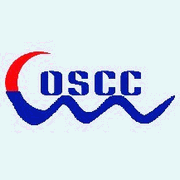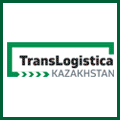Following record profits in 2010, the year 2011 began initially very positively. In the course of the year, however, demand declined significantly. The airlines struggled against eroding demand, especially in the major airfreight markets in China and India. “Lufthansa Cargo turned in an outstanding result in a demanding market environment,“ emphasised Chairman Karl Ulrich Garnadt. That success is chiefly attributable to cost discipline, a broad product range and flexible capacity steering dictated by demand. In the past business year, Lufthansa Cargo increasingly switched capacities from Asia to North America and included new and attractive destinations in its route network. On the back of those measures, the cargo carrier significantly boosted revenues and tonnage. Earnings rose by 5.3 per cent to 2.9 billion euros. The operating profit amounted to 249 million euros, the second-best in company history.
Chairman Karl Ulrich Garnadt pointed out that investment in new products and a strong focus on quality had also contributed to company success. “We raised our quality level markedly again during the year and attained top marks anew in all areas. We will stay on that path and further expand our quality lead.“ That is evidenced for example by our investment in the Lufthansa Cargo Cool Center for temperature-controlled shipments at Frankfurt Airport, he said.
With the “Lufthansa Cargo 2020“ programme launched last year, the company has clearly defined its long-term strategy, explained the Chairman. With orders for new Boeing 777 freighters, the upgrading of the IT platform, plans for a new logistics center in Frankfurt to replace the existing 30 year-old facility as well as other long-term projects, the key markers are in place to ensure that the company remains industry leader also in 2020.
At the same time, Lufthansa Cargo CEO Karl Ulrich Garnadt was emphatic about huge challenges confronting the airfreight industry in the coming years. The EU’s unilateral stance on emissions trading is notably hitting European airlines and distorting competition. The continuing lack of uniformity in global security standards in the air cargo business as well as the slow certification of known consignors in Germany are threatening to inhibit growth.
With all that, the principal challenge facing Lufthansa Cargo is still the possibility of a permanent ban on night flights at Frankfurt Airport. “There is a real danger of Frankfurt losing its position as the best and most attractive airfreight hub in Europe,” emphasised Garnadt. A blanket
night-flight ban of six hours, daily, would severely disadvantage the competitive standing of companies operating at the Frankfurt base. Round-the-clock handling of express cargo is imperative for those companies. A permanent night-flight ban would deprive Lufthansa Cargo alone of major express connections and cost the company a yearly 40 million euros. “Germany and the Rhine-Main region around the airport live from exports and international trade,“ Garnadt remarked. “Severing the world’s seventh biggest air cargo airport and major express hub for a quarter of a day from international goods flows would have a drastic impact on producing companies and the entire logistics industry. The victims are companies based in Frankfurt and thousands of employees.”
Moreover, Peter Gerber, Lufthansa Cargo Board Member Finance and Human Resources, pointed out that only financially healthy operators are in a position to invest in new technologies, such as quieter aircraft. “The prerequisite for that are commensurate operating conditions, allowing companies to plan long-term on a reliable basis.” Lufthansa Cargo has done its homework and is not resting on the laurels of past success. The SCORE earnings improvement programme, now underway across the entire Lufthansa Group, is also an essential lever underpinning Lufthansa Cargo’s efforts to improve the company’s cost base. “Our aim is to raise earnings by a minimum of 70 million euros yearly from 2015, Gerber announced. That will furnish the foundations for Lufthansa Cargo’s ambitious future plans.
In the initial months of the present year, Lufthansa Cargo has also found – in the Chinese Unitop logistics group – a partner for restructuring the Chinese joint-venture carrier, Jade Cargo International, in which Lufthansa Cargo holds a 25 per-cent stake, Gerber noted.
In the current year, Lufthansa Cargo will continue to concentrate on its core business, Gerber told the press conference in Frankfurt. Last year, the cargo carrier divested its stakes, among others, in Traxon Europe, a provider of electronic solutions for airlines, and LifeConEx, an expert in temperature-controlled logistics.
For the year as a whole in 2012, Lufthansa Cargo is assuming that business will develop on a positive note and is again anticipating an operating result in the region of thee-digit millions. However, it will in all probability not replicate the very strong results attained in 2011.
Key figures in fiscal 2011:
Lufthansa Cargo 2011 2010 Change in %
Revenues In €m 2,943 2,795 +5.3
Operating result In €m 249 310 -19.7
Operating margin % 8.5 11.1% -2.6 pp
Employees as of 31.12. Number 4,624 4,517 +2.4
Freight and mail (tonnes) In thousands 1,885 1,795 +5.0
Available tonne-kilometres In millions. 13,647 12,564 +8.6
Revenue tonne-kilometres In millions 9,487 8,905 +6.5
Cargo load factor % 69.5 70.9 -1.4 pp
Source Lufthansa Cargo AG
Cargo carrier offers flights to 303 destinations in 99 countries
Lufthansa Cargo is offering customers flights to 303 destinations in 99 countries in the summer flight schedules, beginning on 25 March. New in the cargo carrier’s global network is Chongqing. The Chinese metropolis will be served with four flights weekly operated by Lufthansa Cargo’s MD-11 freighters. Other newcomers in the timetable - also thanks to the expansion of the network of Lufthansa passenger services - are Shenyang in northeastern China and Qingdao (Tsingtao) in Shandong province.
Flights to Detroit are to be stepped up to twice-weekly connections. Services to the US automotive capital commenced initially in January with a once-weekly flight in the Lufthansa Cargo freighter network.
In South America as well, Lufthansa Cargo customers will have a wider choice of destinations and freighter connections. Twice-weekly MD-11 flights ex Frankfurt will be available to Montevideo, capital of Uruguay.
Back in the timetable is Kolkata (Calcutta). Flights were operated to the Indian metropolis last summer but were discontinued in recent months. Once-weekly direct flights from Frankfurt are now available again in the summer flight schedules.
“We have selectively extended our route network and brought new and attractive growth markets into the timetable,“ noted Lufthansa Board Member Product and Sales Dr. Andreas Otto. “We are expanding our presence in China, the world’s biggest airfreight market, and now laying on freighter connections to a total of six Chinese destinations.”
Lufthansa Cargo is furnishing customers with around 9,000 flights weekly to choose from in the summer flight schedules. The cargo carrier’s freighters will be serving a total of 51 destinations, 25 of them in Asia alone and eight in North America.
All freighter flights out of Germany will be operated from Frankfurt. The flights to North America and Asia, which were relocated to Cologne/Bonn temporarily in the winter timetable, will also depart from Frankfurt.
Source Lufthansa Cargo AG
2012-03-21
APM Terminals’ Director of Business Development and Infrastructure Investments for the Africa-Middle East Region, Reik Mueller described a new model for transportation planning and development in West Africa in which port and terminal operations shift focus from “container lifts” toward “integrated container transport solutions” at the 3rd Annual Africa Ports, Logistics & Supply Chain Conference which opened March 19.
“Dry ports and inland markets are the untapped, overlooked opportunity markets of the future in Africa” Mr. Mueller stated as he addressed the topic of “Dry Ports and Inland Corridors” on the opening day of the two-day event.
APM Terminals, a leading port and terminal operating company in Africa, currently operates nine port facilities in eight West African countries, as well as Morocco’s Tanger-Med port, and Egypt’s Suez Canal Container terminal and 35 Inland Services facilities.
Although the International Monetary Fund has projected a 5.5% economic growth rate for sub-Saharan Africa this year, and a 5.3% increase for 2013, obstacles to trade, particularly concerning cargo movements between neighboring countries, will prevent the full benefit of such economic progress from being felt across the African population.
Nearly one in three African countries is landlocked, accounting for 26% of the continent’s landmass, and 25% of the population, or more than 200 million people, Mr. Mueller noted, indicating that current population growth trends, including the development of population megacities distant from coastal locations will become powerful drivers of inland markets.
“Ports will compete to become preferred gateways to move goods efficiently to inland cities and landlocked countries” said Mr. Mueller, adding “The future prosperity of these nations depends on access to the global economy and new markets; high-growth markets need inland infrastructure and logistics capabilities along development corridors. The ports that can provide the best and most efficient connectivity to those Inland markets will be the winners.”
Citing the success in reducing port congestion through Inland Container Depots (ICDs) now in operation outside of the APM Terminals operated port of Luanda, Angola, the Meridian Port Services joint venture in Tema, Ghana, and the ICD which was opened four km from APM Terminals Apapa, the busiest container terminal in Nigeria and all of West Africa, Mr. Mueller made the case for integrated transportation solutions.
“Importers are not going to wait for improved infrastructure; the cargo will simply move to other ports” said Mr. Mueller.
Source APM Terminals
Amid high-caliber research output and citation impact, analysis reveals region has unfilled potential to accelerate dementia cure
Philadelphia, PA, London, UK, March 20, 2012 - The Intellectual Property & Science business of Thomson Reuters today announced findings that the quality of dementia research in the United Kingdom (UK) is second in the world only to the United States, despite the low number of scientists working in this field, and that finding a cure can be accelerated by increasing the number of dementia researchers and investment, according to work done using the Thomson Reuters Web of Knowledge(TM). The findings are featured in an Alzheimer's UK Research Report "Defeating Dementia."
The results from the analysis reveal the UK published more research on dementia than any other country except the United States and ranks second in the world after Sweden in citation impact, which is the number of times UK research is referenced in dementia studies around the globe. Despite its high performance and influence, dementia research capacity in the UK is low when compared to cancer, stroke and heart disease. For every dementia research scientist there are six who work on cancer.
"Research output and citation impact in scientific literature is an ideal way to measure the quality and capacity of dementia research," said Karen Gurney, manager of bibliometric reporting at Thomson Reuters and analyst of this report. "This project illuminated an interesting dementia-research landscape in the UK, where this region is clearly playing an influential role despite its size."
The research study was commissioned by the UK's leading dementia research charity, Alzheimer's Research UK, in an effort to raise awareness and increase investment for the underfunded field. The data measuring the quality and size of dementia research in the UK was compiled by Thomson Reuters. Issued by Alzheimer's UK, the report, Defeating Dementia, also outlines 14 recommendations to the UK government based on feedback from scientists working in the field.
"The data provided by Thomson Reuters have been extremely valuable in allowing Alzheimer's Research UK to uncover the facts about dementia research output and quality in the UK," said Simon Ridley, head of research at Alzheimer's Research UK. "We wanted to dig deep into the issue of UK research capacity in this field. The work carried out by Thomson Reuters enabled us to do this and make a strong case for more investment in dementia research."
Rebecca Wood, chief executive, Alzheimer's Research UK, concurs. "Alzheimer's Research UK relies on robust data to support its expertise. The data provided by Thomson Reuters allowed us to present an in-depth picture of UK dementia research in a global context over the last fifty years. It has been very well-received by a range of stakeholders, including government and other research funders."
To view the Alzheimer's Research UK report, Defeating Dementia, visit: www.alzheimersresearchuk.org.
Source Thomson Reuters, IP Solutions
Container shipping lines have idled about 5 percent of global fleet capacity, or 800,000 20-foot equivalent units, as demand for container shipping space slows, Maersk Line CEO Soren Skou said Thursday.
That figure could soon increase to more than 1 million TEUs, a level not seen since 2009, when trade was severely hit by the financial crisis, Skou said in Singapore on his first overseas trip as CEO.
He forecast container demand growth will slow to between 5 and 8 percent in the next few years compared to an average of 10 to 11 percent over the past 25 years as Western economies weaken, manufacturing activity in Asia slows, and products become smaller in size.
"Demand growth will be less than what it was in the past," Skou said in a report by Reuters. "We do not have any lay up ships at this point. But we are certainly not ruling out laying up ships over the summer if the market is growing less than what we expected."
Maersk has already removed 9.5 percent of its Asia-Europe capacity and has decided against ordering ten more Triple-E vessels, the world's largest container ships, to add to its current fleet of 20. Despite the cuts, Maersk Line maintains its dominant 15.5 percent share of the container market.
Maersk has the flexibility to reduce its global capacity by a further 9 percent as the contracts for 20 percent of its chartered vessels are due to expire this year, Skou said.
The container shipping industry, which lost an estimated $5.2 billion last year, according to Drewry Shipping Consultants, is starting to lay ships up in an effort to support the increase in freight rates it has been announcing on the major east-west trade lanes since the beginning of the year.
The overcapacity of containerships and weak demand have led container lines to slash rates in an effort to fill those ships and gain more market share, but this has led to substantial losses.
Last year, overall freight rates were 8 percent lower than 2010 while bunker prices rose some 35 percent, Maersk said.
The world's largest container firm, a unit of Danish shipping and oil group A.P. Moller-Maersk, last month reported a net loss of $504.59 million in 2011, and has forecast more losses in 2012.
Skou, who became CEO two months ago, reiterated the firm's main mission was to restore profitability and reduce market overcapacity by adjusting its fleet and reducing the speed of vessels.
"As an industry, we have been investing ahead of demand. As demand has been slowing down, we do expect to have a situation with excess capacity over the coming years," he said.
"We have to invest less. We have to stop trying to outgrow each other, building bigger and bigger ships."
Maersk Line forecast container demand to slow to between 5 and 8 percent in the next few years compared to an average of 10 to 11 percent over the past 25 years as Western economies weaken, manufacturing activity in Asia slows, and products become smaller in size.
Skou said the company does not have any acquisition plans and does not believe there will be much more consolidation in the industry in the near term
- Peter T. Leach, The Journal of Commerce.
2012-03-21
Hanjin Shipping is expanding its operations in the trans-Pacific, adding two joint services, one connecting the U.S. West Coast with the Middle East and South Asia, and the other with Japan.
Hanjin will operate both services as vessel-sharing agreements with other carriers.
Beginning April 27, Hanjin and NYK Lines will deploy 11 vessels with 6,500 20-foot equivalent units of capacity in a new Pacific South & Gulf Service, a direct service from the Middle East and Southeast Asia to the U.S. West Coast. The PSG service will provide a 19-day transit time from Singapore to Los Angeles, 17 days from Laem Chabang to Los Angeles and 13 days from Yantian to the U.S. West Coast.
Hanjin will launch the Japan & Pacific South Express Service on May 10 with Grand Alliance carriers NYK, OOCL and Hapag-Lloyd. The VSA partners will deploy five 3,400-TEU ships in the JPX service, which will use Hanjin’s TTI Terminal in the ports of Long Beach and Oakland.
Source JOC Sailings
2012-03-21
The Liège Container Terminal is the first non-Dutch hinterland terminal that received the quality mark InlandLinks. This was announced today by the Wallonian Prime Minister Rudy Demotte during a visit to the port of Rotterdam.
Inland Links is the quality mark of and platform for container terminals in the hinterland, and offers, via www.inlandlinks.eu insight into the whole intermodal service package right up to the terminal level. This has been standardised, thus made comparable, on the basis of six criteria:
- Availability of facilities and services
- Safety and security
- Accessibility and connections with the port of Rotterdam
- ICT: data connections and integration with Portbase
- Customs facilities
- Sustainability and the environment
Tripling
Rotterdam expects to see container flows triple in the next 25 years. Due to the growth in world trade, the favourable geographic location and the increase in very large container ships, each with a capacity in the region of 20,000 units. Of the total 30 million TEU handled in 2035, 12 million are expected to be shipped in and out using smaller vessels from and to European ports. Some 18 million TEU will travel to and from the hinterland via intermodal transport. For this flow, InlandLinks should provide better and more sustainable connections.
More information on the criteria, advantages for shippers and service providers as well as the use of the InlandLinks system and www.inlandlinks.eu/en
Source Port of Rotterdam Authority
In January, the Drachten transport company MSC started the construction of a container terminal in Leeuwarden. The sheet pile wall is already in place and the pile driving has begun. The terminal will be alongside the Van Harinxma Canal and will cost € 8.5 million. The canal will get a turning basin, so that the 110-metre long container ships will be able to turn. The terminal is due to be completed in the summer of 2012.
Reachstacker on MCS terminal Meppel
Major client
Every week, four container ships will sail to and from Rotterdam. The company has a five-year contract to carry the containers for FrieslandCampina. Currently, these number about 300 a week. MCS transports 75,000 containers a year to the port of Rotterdam and already has terminals in Groningen and Meppel too.
Sources: Cobouw 27-02-2012, NOM, MCS and Port of Rotterdam Authority
2012-03-21
Kotug has put the first hybrid tugboat into service in the port of Rotterdam. The E-Kotug type ship has diesel and electric engines and can switch between the two.
The hybrid system was retrofitted in the RT Adriaan and will be put into use officially at the end of April/early May 2012 as E-KOTUG. Kotug expects to slash the CO2, nitrogen oxide and particulate emissions by half. Other benefits will be more efficient fuel consumption and maintenance savings.
Source Port of Rotterdam Authority
This afternoon the largest project cargo transport ship in the world, the Blue Marlin of Dockwise, will arrive around 17.30 hours into the port of Rotterdam.
The ship departed on 28 January last from Nantong Port from China via the Yangtze River and carries three pontoons and 18 barge hulls. The pontoons and barge hulls will be unloaded by quay and/or floating cranes. The port of Rotterdam has a unique position as project cargo port thanks to an extensive fleet of floating cranes with maximum lifting capacity of 1,800 tonnes.
Source Port of Rotterdam Authority
MEDITERRANEAN Shipping Company's (MSC) 12,500-TEU Fabiola has become the largest containership to call at a North American port, after making a stop at Long Beach on a transpacific service.
The ship called at the Total Terminals International, and was accommodate with a channel depth of 76 feet (23 metres), making it one of the few ports that can handle ships of this size.
The shipping line is expected to continue to add more box ships ranging in size from 11,000-12,500 TEU into its transpacific services over the course of the year.
A report by Alphaliner cited port officials as saying that the MSC Fabiola, "Is the first of what is expected to be a string of larger containerships to be deployed by ocean carriers in Pacific Rim routes."
But the vessel was only 70 per cent full when it arrived and is not scheduled to make another transpacific voyage following its maiden call, said the Paris-based consultancy.
Alphaliner said MSC instead plans to operate three smaller 11,660-TEU vessels on the Far East-US west coast Pearl River Express (PRX) service, which is a joint service with CMA CGM.
"The other carriers active in the trade are not expected to follow MSC's example. They are not expected to deploy ships larger than 10,000 TEU on the transpacific route in the near future, as they are unlikely to be able to fully utilise the available capacity of such ships on the route. The larger ships also pose operational challenges," said Alphaliner.
It noted that the shipping line's giant newbuildings deployed on the Pearl River Express can not call at its regular Long Beach terminal, meaning that ships have to be diverted to the TTI terminal operated by Hanjin Shipping.
Source Shipping Gazette - Daily Shipping News
SINGAPORE-FLAGGED 3,100-TEU Bareli has run aground on a reef in bad weather off in northern Fujian coastal across the strait from Taipei while carrying 1,913 containers and 1,100 tonnes of heavy fuel oil for West Africa.
"The vessel has a severe crack in the fore body, and has taken on water and is currently on the rocks. There are no reports of oil spill, but booms are in place to prevent on if the situation should change," said a statement from the Oslo-based ship manager Torvald Klaveness.
Said Torvald Klaveness CEO Lasse Kristoffersen: "We are doing whatever we can to empty the ship of fuel oil and dangerous goods."
All 21 crew are Romanian, Filipino and South Africans are reported to have been taken safely ashore. "After the safe evacuation of all crew members already on Thursday night, we have been mobilising all available resources to get the salvage operation underway," said Mr Kristoffersen.
"First priority now is to empty the ship of fuel oil. Shanghai Salvage as been contracted for the operation and is mobilised on site together with our most senior ship management personnel," he said
The 2003-built and 212.75 metre long vessel is chartered by the world's third largest carrier CMA CGM, reported London's Containerisation International.
Source Shipping Gazette - Daily Shipping News
MARSHALL Islands-based and New York-listed Box Ships Inc has posted a net income of US$12.96 million from its initial public offering on April 14 to December 31 with pre-tax profit of $25.57 million and the time charter revenues of $39.13 million.
"2011 was our first year as a public company and we demonstrated excellent vessel performance with a 100 per cent vessel utilisation rate since inception and strong operating results," said Box Ships chairman and CEO Michael Bodouroglou.
Net income for the fourth quarter of 2011 was $5.58 million, while the EBITDA was $10.87 million and the time charter revenues were $16.58 million, according to the company statement.
The company operated an average of 5.92 vessels during the period ended December 31, 2011, earning an average time charter equivalent rate (TCE rate) of $24,363, or $25,043 on an adjusted basis per vessel per day.
In the fourth quarter, it operated an average of seven vessels during the fourth quarter, earning an average TCE rate of $24,601 or $25,373 on an adjusted basis per vessel per day.
Looking ahead, Mr Bodouroglou said: "2012 will be a challenging year. We expect our charter coverage and our ongoing cost control measures will continue to fund our quarterly dividends, which as we have previously stated we expect to total $1 per share for the full year 2012."
Regarding its chartering strategy in 2012, the company said it will focus on containerships with capacities ranging from 1,700 TEU to 7,000 TEU and employ them on short- to medium-term time charters of one to five years.
The company said this practice "will provide us with the benefit of stable cash flows from a diversified portfolio of charterers, while preserving the flexibility to capitalise on potentially rising rates when the current time charters expire."
So far, the company has secured 93 per cent of its fleet capacity in 2012 and 71 per cent in 2013 under such contracts.
Source Shipping Gazette - Daily Shipping News
CONTAINER carrier schedule reliability improved in February, according to the latest report from SeaIntel Maritime Analysis.
Reliability increased from 58 per cent in January to 60 per cent in February, the first increase in four months, American Shipper reported. SeaIntel considers a call on time if it happens on the same calendar day or the day before as scheduled. The analyst also noted an increase in the reliability among the top performing carriers.
For the top 20 container carriers, Maersk Line maintained top spot as the most reliable carrier at 75 per cent, followed by Hamburg Sud at 72 per cent, and APL at 67 per cent.
Compared to January, Maersk improved three per cent and APL seven per cent, while Hamburg Sud maintained its performance. In the past eight months, Maersk has been the top performer five times and Hamburg Sud the other three times.
Out of 8,400 measured arrivals in February 2012, SeaIntel's monthly report now includes 1,900 arrivals in trades to and from Africa, Middle East and the Indian Subcontinent. Most of these trades exhibit reliability in line with the global average. However the African import routes exhibit a markedly lower performance, at 29 per cent, from Asia as well as North Europe to Africa.
The measurements are based on SeaIntel's database of more than 58,000 arrivals from 2,200 vessels, 29 trade lanes and 51 carriers since July 2011.
Source Shipping Gazette - Daily Shipping News
PORT of Chongqing recorded a surge of 72.6 per cent in its container throughput to 65,200 TEU in February, Xinhua reports.
In the same month, the port's throughput tonnage grew 41.1 per cent to 9.48 million tonnes. Foreign trade cargo weighed 314,000 tonnes, up 68.4 per cent year on year.
Source Shipping Gazette - Daily Shipping News
The magazine SEA has been published since 1935
International business magazine JŪRA MOPE SEA has been published since 1999
The first magazine in Eurasia in the four languages: English, Chinese, Russian and Lithuanian
|
|




.jpg)






